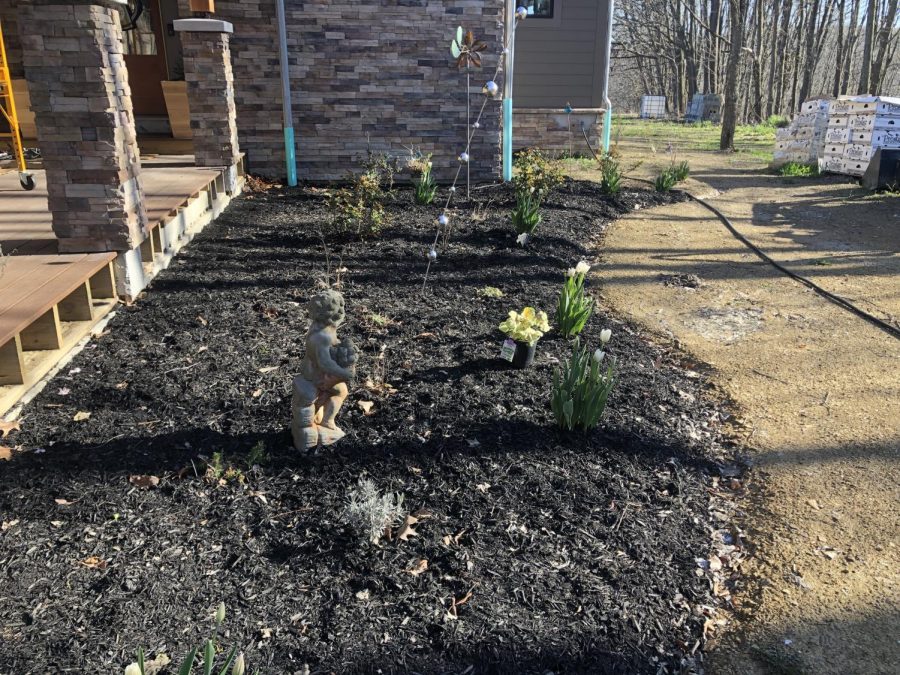Sowing seeds for a new hobby
Gardening is an easy hobby to get into while at home
As part of a garden, decorations can be placed between the plants to add color and fill up some empty space.
With the stay-at-home order due to the coronavirus, many people have been looking for new pastimes. As spring has just begun and the days start to get warmer and longer, gardening is a skill that the average person can easily pick up. Whether herbs, vegetables or flowers are grown — or a combination of them — all of them have their reward. If someone is looking for something to do, gardening is a perfect opportunity to get outside and do some work in the yard.
The first step to beginning a garden is to determine what plants will go in the garden. Some easy herbs to grow include basil, thyme, mint and rosemary, which are all useful in a variety of recipes. Cucumbers, tomatoes and peppers are all types of vegetables that can be grown in Pennsylvania’s soil. When thinking about flowers, one needs to choose between annuals and perennials. Annuals need to be planted yearly and have longer bloom seasons, whereas perennials will bloom for multiple years but usually have a shorter bloom season. These seeds, bulbs and plants can be found at local gardening stores or can be ordered online.
When thinking about where to put a garden, it’s much easier to plant on a flat surface than a sloped surface. Also, the amount of sun that each plant receives is important. When looking at plants, make sure to check the tags on the plant to see how much sun they need and consider that when picking a spot for the garden.
To plant in the chosen area, the sod needs to be removed and the soil needs to be prepared for planting. To remove the sod, the grass can be smothered by covering it with newspapers the fall before planting or the sod can be cut out using a spade. Following this, adding organic material to the top layer of the garden will help improve the soil. This includes compost, dry grass clippings and decayed leaves. There are two methods to prepare the soil: digging or tilling. Digging involves mixing the soil and organic matter, whereas tilling involves using a machine to turn over the soil. Digging works better for small gardens and helps mix the organic matter in with the soil.
After this, picking the plant and putting them into the earth are the next steps. Depending on the plants that are picked, they will have different times that they will need to be planted and grown. These can easily be found on the plant’s tag or seed packet or by looking it up online. Most of the time, the planting instructions will also be with this information. By following the instructions that are laid out for each plant, the likelihood of having a successful garden increases.
After planting is completed, maintenance needs to occur. This includes watering the plants as needed and keeping the beds clear of weeds. The amount of water that a plant needs depends on its type and age. As plants get larger, they may not need as much water. To keep the beds clear of weeds, mulch can be used. Depending on the type of garden, different types of mulch (organic or inorganic) should be used. For any weeds they do manage to get through the mulch, they will need to be pulled, including the roots, so that they do not regrow.
Whether one chooses to grow flowers, herbs or vegetables, they all produce their unique rewards that are a treat for all the senses. Though they require work to set them up and to maintain them, gardening is an easy way to spend your time during this quarantine.



